Come and visit us at our new showroom: 1226 N Roselle Road Schaumburg, IL 60195
Blinds
Faux Wood Blinds
-
Faux Wood Blinds from Marqi Blinds Window Fashions offer long-lasting durability and a clean, uncluttered appearance. Marqi Blinds Windows classic Faux Wood Blinds are easy to clean, will not warp in high-humidity areas, and are well-suited for any room in your home, especially bathrooms and kitchens with their moisture resistant PVC slats.




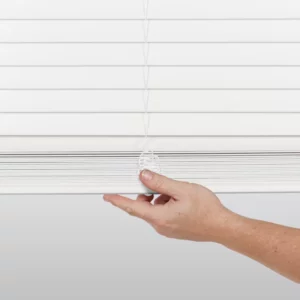
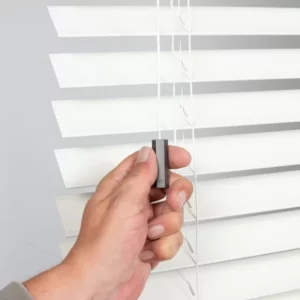

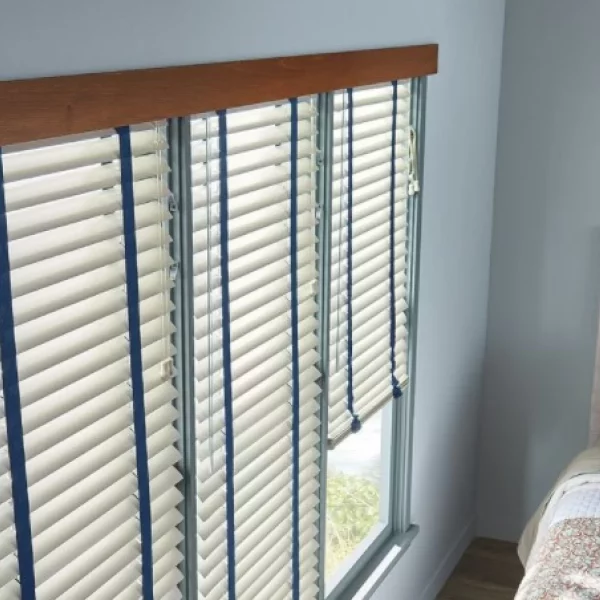
Aluminum Blinds
-
A functional favorite, Marqi Aluminum Blinds just received a fashionable refresh! They not only offer the modern sensibility of aluminum, but they’re also available in warmer tones and textures, ensuring an on-trend aesthetic. More than that, these blinds dodge dust, stains, and scratches, while also providing maximum light control and legendary dependability.
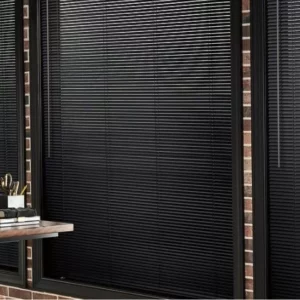
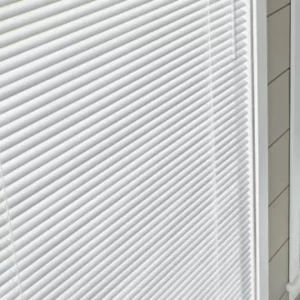



Vertical Blinds
-
Durable, easy to operate, and available in a wide range of colors and materials,
Marqi Blinds – Vertical Blinds are a cost-effective solution for reliable light control on your wide windows and patio doors.
Wood Blinds
-
The arboreal beauty of sustainably-sourced Marqi Blinds Wood Blinds adds a rich warmth to any room.
Meticulously crafted from North American hardwood in rustic and modern paints, stains, and finishes, Marqi Blinds Wood Blinds add natural insulation and character to your home.
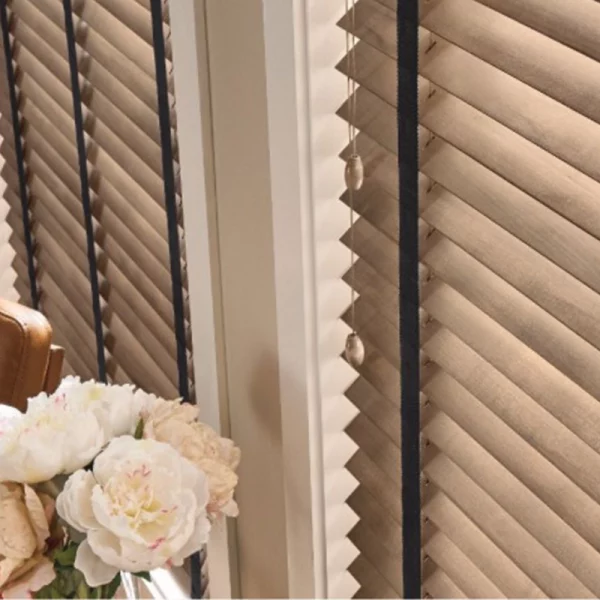

Custom Natural Bamboo Blinds
- With natural bamboo blinds, you can control the amount of light you let into your room. The blinds are made of high quality bamboo and other eco-friendly materials. The bamboo blinds are easy to clean with a feather duster, and they are easy to place and operate.
What are Blinds?
Blinds are a type of window covering made from individual slats or vanes that can be adjusted to control light and privacy. They come in various materials, including wood, plastic, metal, or fabric, and can be operated manually or motorized. Blinds are versatile in design and function, offering solutions for almost any window size and style preference.
What are Blind Types?
Blinds offer a versatile and practical solution for window coverings. They are available in various types to suit different needs and design preferences. Each type of blind provides unique benefits, from light control to privacy, and can complement the aesthetic of any room. Whether you’re looking for something traditional or more modern, there’s a blind style to match your interior decor and functional requirements.
The types of blinds include Faux wooden, aluminum, vertical, wood, Venetian, mini, roller, Roman, and panel track blinds, each offering different styles and functionality for window coverings. These varieties listed below cater to various aesthetic preferences and practical requirements, such as light control, privacy, and ease of use.
- Faux Blinds
- Aluminum Blinds
- Vertical Blinds
- Wood Blinds
- Venetian Blinds
- Mini Blinds
- Roller Blinds
- Roman Blinds
- Panel Track Blinds
Faux Blinds
Faux wood blinds are a durable and cost-effective alternative to real wood blinds, made from synthetic materials like PVC. They mimic wood’s appearance but offer greater moisture and wear resistance, making them suitable for various environments, including humid spaces like kitchens and bathrooms. Faux wood blinds are easy to maintain and provide the aesthetic warmth of wood at a more accessible price point.
Aluminum Blinds
Aluminum blinds are lightweight and durable window coverings made from aluminum. They are known for their sleek design and are available in a wide range of colors. These blinds are a popular choice due to their affordability, ease of maintenance, and the effective control they offer over light and privacy. Aluminum blinds are also moisture-resistant, making them suitable for kitchens, bathrooms, and other high-humidity areas.
Vertical Blinds
Vertical blinds consist of individual slats or vanes that hang vertically from a track system at the top of a window or door. They are operated either by a chain, wand, or motorized mechanism, allowing them to slide across the track to open or close, and the vanes can be tilted to adjust light and privacy levels. Vertical blinds are particularly suited for patio doors, large windows, and floor-to-ceiling windows due to their orientation and ease of operation.
Wood Blinds
Wood blinds are made from real wood, offering any room a warm and natural look. They are valued for their durability, classic appeal, and the rich texture they add to a space. Wood blinds can be customized in various stains and finishes, allowing them to fit various interior designs. They provide excellent light control and privacy, making them a popular choice for residential and commercial settings.
Natural Bambu Blinds
Natural bamboo blinds are window treatments made from bamboo materials that offer a unique and eco-friendly option for enhancing your home’s decor. These blinds are crafted from natural bamboo reeds or slats, providing a rustic and organic look. Bamboo blinds are known for their durability, light filtering properties, and sustainability, making them a popular choice for environmentally conscious homeowners. They can add warmth and texture to your space while offering privacy and light control. With their natural aesthetic and earthy appeal, bamboo blinds are a stylish and environmentally friendly window treatment option for any home.
Venetian Blinds
Venetian blinds are a type of window covering made up of horizontal slats that can be adjusted to control the amount of light and privacy. These blinds can be made from various materials, including wood, plastic, or metal, allowing for a wide range of styles, colors, and finishes. Venetian blinds are versatile, offering a classic look that fits modern and traditional interior designs. The slats can be tilted to adjust the light entering the room or lifted entirely for a clear view outside. They are easy to clean and maintain, making them a practical choice for many homes and offices.
Mini Blinds
Mini blinds are a type of Venetian blinds featuring narrow slats, typically around 1 inch (2.54 cm) wide, made from aluminum, vinyl, or sometimes wood. They are a popular, cost-effective choice for window coverings, offering precise control over light and privacy with a minimalistic look. Mini blinds are durable, easy to clean, and suitable for a variety of settings, including homes and offices. Their compact slat size makes them particularly suited for smaller windows or spaces where a sleek, discreet appearance is desired.
Roller Blinds
Roller blinds are window coverings made from a single piece of fabric that rolls up or down from a tube installed at the top of the window. They are operated by a pull cord or a chain mechanism or can be motorized for ease of use. Roller blinds offer a simple, sleek design, making them suitable for modern and traditional interiors. They are available in various fabrics, including light-filtering, blackout, and thermal options, providing versatility in light control, privacy, and insulation.
Roman Blinds
Roman blinds are window coverings that elegantly fold into pleats when raised. Made from fabric, they combine the soft appearance of curtains with the functionality of blinds. Roman blinds offer a clean, streamlined look in various fabrics, patterns, and textures, allowing customization to fit any decor style. They provide excellent light control and privacy, making them popular for residential and commercial spaces.
Panel Track Blinds
Panel Track Blinds, also known as sliding window panels or panel tracks, offer a contemporary and versatile window treatment option. They consist of large fabric panels that slide back and forth on a track system, making them ideal for large windows, sliding glass doors, or room dividers. Panel Track Blinds provide an elegant and sleek solution to covering vast expanses of glass, offering privacy and light control. The panels can be made from various materials, including fabric, woven wood, or solar screen, allowing for different transparencies and textures. This type of blind is favored for its clean lines and modern look, seamlessly integrating into various interior design styles.
How to Choose the Right Blinds?
Choosing the right blinds involves several key considerations:
- Assess Light Control & Privacy Needs: Determine how much light you want to block or filter and your privacy requirements.
- Measure Windows Accurately: Proper fit is crucial for both appearance and functionality.
- Select Material Based on Room: Consider moisture resistance for bathrooms and durability for high-traffic areas.
- Consider Style & Decor: Choose a design that complements your interior.
- Manual vs. Motorized Operation: Decide based on convenience, safety, and budget.
- Installation & Maintenance: Evaluate how easy the blinds are to install and maintain.
- Budget: Factor in the cost to ensure it meets your financial plan.
What are The Costs of The Blinds?
The costs of blinds vary widely depending on the material, size, brand, and whether they are custom-made or standard sizes. Basic vinyl or aluminum mini blinds can start as low as $20-$50 per window, while higher-end materials like wood or custom-designed options can cost several hundred dollars per window. Motorized and smart blinds may increase the price due to their advanced features. It’s best to consult with specific retailers or manufacturers based on your requirements for precise pricing.
What are The Benefits of Blinds in Interior Design?
Blinds offer a functional and stylish addition to any interior design, blending practicality with aesthetic appeal. Below is a list of how they enhance your space:
- Light & Privacy Control: Precisely adjust light and privacy levels.
- Energy Efficiency: Insulate rooms, reducing heating and cooling costs.
- Durability: Long-lasting with minimal maintenance.
- Customization: Tailor sizes, colors, and mechanisms to fit specific needs.
- Space Saving: Sleek profile compared to other window treatments.
- Easy Maintenance: Simple to clean and care for.
- Aesthetic Versatility: Complement any decor style with various materials and designs.
Tips for Matching Blinds with House Decor
Matching blinds with house decor enhances your living space’s overall aesthetic and cohesion. Here are some tips to consider:
- Consider the Color Scheme: Choose blinds that complement or contrast nicely with your room’s color palette. Neutral colors offer flexibility and longevity, while bold colors can make a statement.
- Texture and Material Matter: Select materials that align with your room’s style. Wooden blinds add warmth and suit traditional or rustic decors, whereas metal or plastic blinds fit well in modern interiors.
- Functionality with Style: Consider the functionality you need, such as light filtering or blackout capabilities, and ensure the style of blinds you choose meets these needs without compromising appearance.
- Layer for Depth: Combine blinds with curtains or drapes for added depth, texture, and functionality. This can also provide a more finished look.
- Consistency Across Rooms: Maintaining a consistent style or color of blinds throughout your home can create a cohesive look, especially in open-plan spaces.
- Accessorize: Use valances, cornices, or decorative pulls to add a personal touch and further integrate the blinds with your room’s decor.
- Lighting and Mood: Choose blinds that support the room’s purpose. For example, lighter fabrics for a sunroom or darker shades for a home theater.
- Customize for Unique Windows: For unusual window shapes and sizes, consider custom blinds to ensure a perfect fit and to complement your home’s unique features.
You can create a seamless and inviting atmosphere by carefully selecting blinds that harmonize with your home’s interior design.
Custom Blinds
Custom blinds offer a tailored solution to meet specific window treatment needs, providing a perfect fit for any window size or shape. Here’s what sets them apart:
- Personalized Fit: Custom blinds are made to measure, ensuring a precise fit for your windows, which can improve insulation and light control.
- Wide Selection of Materials: Choose from a variety of materials, including wood, faux wood, aluminum, and fabric, to match your decor.
- Custom Color and Design: Select from an extensive range of colors, patterns, and designs to complement your interior design scheme.
- Unique Features: Incorporate features like motorization, cordless operation, or thermal insulation to meet your specific needs.
- Professional Installation: Often, custom blind orders include professional measurement and installation services, ensuring a perfect fit and finish.
Opting for custom blinds means investing in a window treatment that looks great and performs optimally, tailored to your exact preferences and requirements.
How to Install Blinds?
Installing blinds can significantly change the look and functionality of your windows. Follow these steps for a smooth installation process:
- Measure Your Window: Decide on the inside or outside mount and measure accordingly.
- Choose Mount Type: Inside mount for a clean look, outside to make windows appear larger.
- Install Brackets: Secure them inside the window frame or on the wall above.
- Attach the Blind: Click the headrail into the bracnes.
- Secure the Blind: Lower the blind to ensure it operates correctly.
- Adjust if Necessary: Trim the blind’s width or length according to your window’s size.
- Follow Instructions: Always follow the manufacturer’s instructions for the best results.
- Get Professional Help: Get professional help when you need complicated processes to protect your walls, windows, and blinds.
Following these steps will help you successfully install your blinds, enhancing your room’s comfort and style.
How to Care for Your Blinds?
Proper care extends the life and appearance of your blinds. Here’s how to keep them in top condition:
- Dust Regularly: Use a soft cloth or duster.
- Vacuum: For deeper cleaning, use the brush attachment.
- Spot Clean: Gently wipe stains with a damp cloth and mild detergent.
- Avoid Harsh Chemicals: They can damage the material.
- Follow the Manufacturer’s Instructions: For specific cleaning guidelines.
These steps ensure your blinds remain clean, functional, and aesthetically pleasing.



